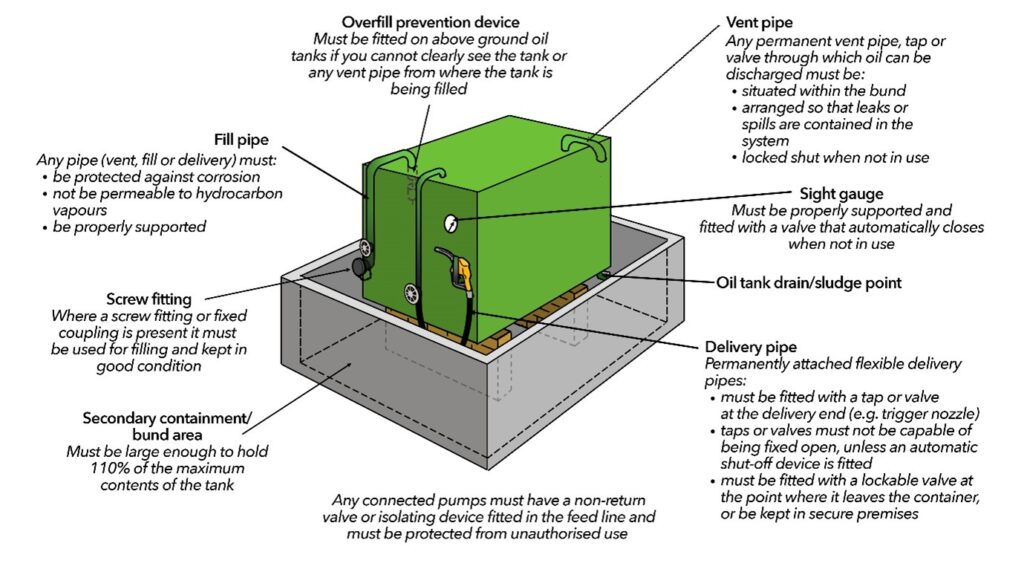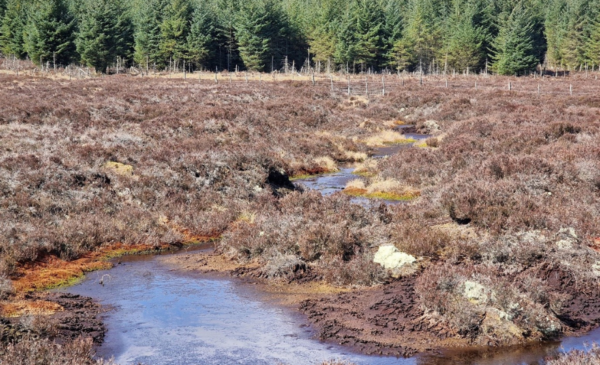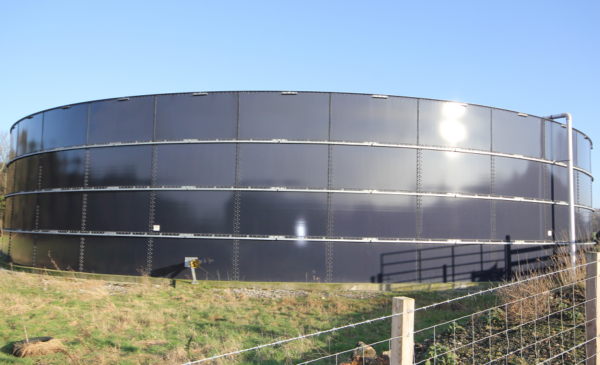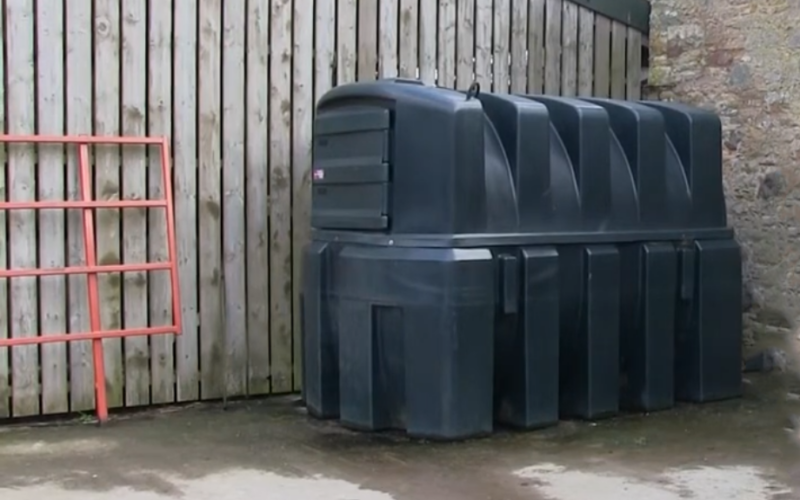Fuel and oil are essential resources for the daily operations of farms across Scotland, but improper storage can lead to serious environmental, financial, and legal consequences. Storing them safely and following regulations is essential.

In Scotland, oils must be stored in line with the requirements specified in General Binding Rules (GBRs) 26,27 and 28 of the Water Environment (Controlled Activities) (Scotland) Regulations (as amended).
Existing domestic oil tanks, such as those used to store oil for heating a farmhouse, with a capacity under 2500 litres are exempt from the regulations. However, new or replacement tanks of this size must comply with building regulations, which require a risk assessment to decide is secondary containment is needed.
The main requirements are:
- Strong containers – The container must be strong enough to prevent leaks or bursts.
- Secondary containment – Use a bund or drip tray to catch any leaks from the container or its pipe work and equipment.
- The secondary containment system must hold at least 110% of the largest containers capacity.
- For multiple containers, bunds should hold 110% of the largest container or 25% of the total storage capacity, whichever is the greater.
- Oil stored in mobile bowsers must also be bunded.
- Safe positioning –
- The container must be positioned to avoid damage as far as is reasonably practicable.
- No part of the storage facility must be within 10m of the water environment, or 50m from a spring, well or borehole.
- Impermeable bunds – Bund bases and walls must be leak-proof and regularly inspected.
- Ancillary equipment – Keep valves, filters, and gauges inside the bund when not in use.
- Pipe work –
- Above-ground pipes must be properly supported.
- Below-ground pipes must be protected, have leak detection, and use accessible joints for inspection.
Failing to comply with these regulations can result in significant fines or penalties.
Practical tips for safe storage
- Choose the right equipment – Use double skinned or integrally bunded tanks for storing oil. These are highly durable and offer additional protection.
- Label clearly – Clearly label all storage tanks with their contents and associated hazards.
- Secure your storage – Use locks and secure fencing or buildings to prevent unauthorised access, theft or vandalism.
- Have spill kits available – Keep spill kits, such as absorbent granules and booms near to oil storage and refuelling areas. Train staff on how to use them effectively.
- Monitor usage – Regularly check oil levels to identify irregularities that could signal a leak or theft.
- Protect against flooding – Elevate tanks where possible and ensure bunds are not holding rainwater, which can reduce their capacity to contain spills.
Emergency preparedness
In the event of a spill, act quickly to minimise any impacts.
- Stop – the source of the spill or leak, if safe to do so.
- Contain – the spill using absorbent materials or bunds.
- Notify – SEPA of significant spills immediately.
- Clean up – the spill and dispose of contaminated materials appropriately in accordance with the duty of care for waste.
Ensuring proper fuel and oil storage is essential for smooth running of your farm and for protecting Scotland’s environment. Following the rules and best practices helps you to stay safe, compliant, and maintain peace of mind.
If you need more information or advice about the storage of oil on your farm, please contact SEPA at nationalrural@sepa.org.uk. Further guidance and information can be found at www.farmingandwaterscotland.ork.org and www.netregs.org.uk
Related resources

Remote sensing: can it help water management on farm?
Jack Zuill, SAC Consulting
Efficient water management is vital for both productivity and sustainability in agriculture. Scottish farmers face…

New Cross-Compliance Rules for Peatlands and Wetlands in Scotland
Jack Zuill, SAC Consulting
From 1 January 2025, new cross-compliance requirements under Good Agricultural and Environmental Condition (GAEC 6…

Black Gold- Valuing Slurry as a Nutrient Source
Freya Lance, SAC Consulting
2024 saw a fresh round of AECS funding for slurry storage, which has allowed a…

